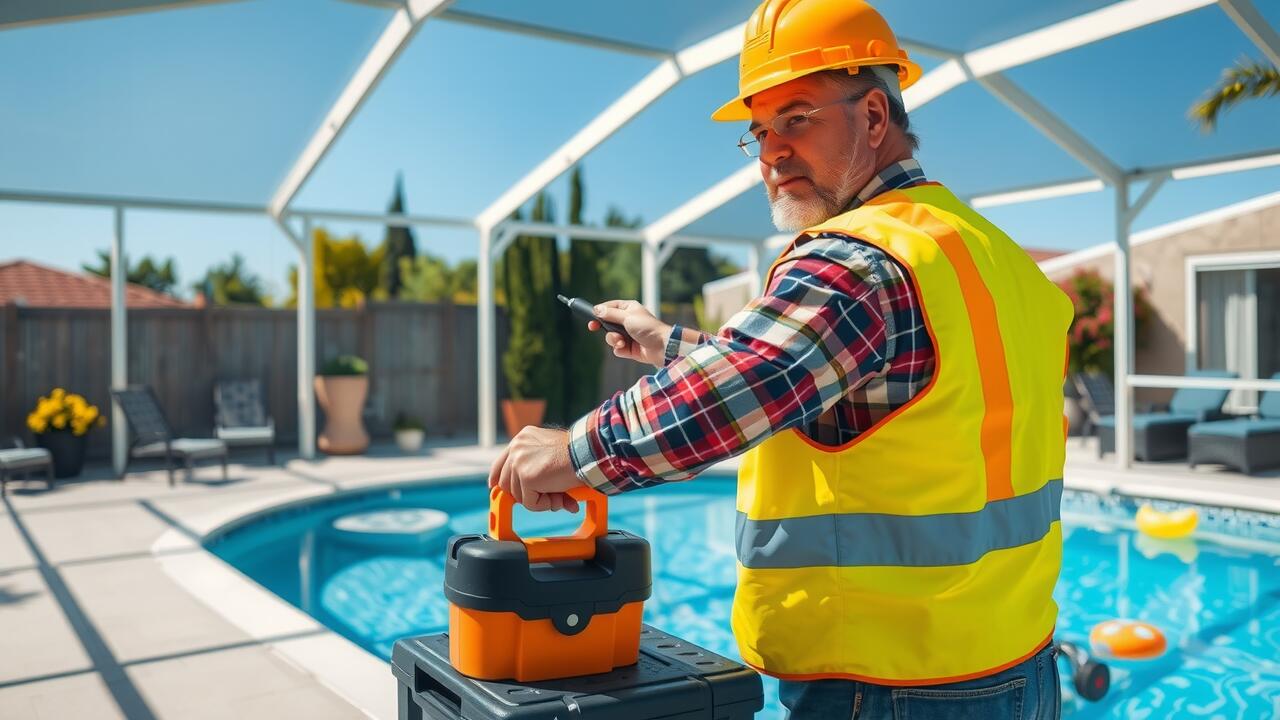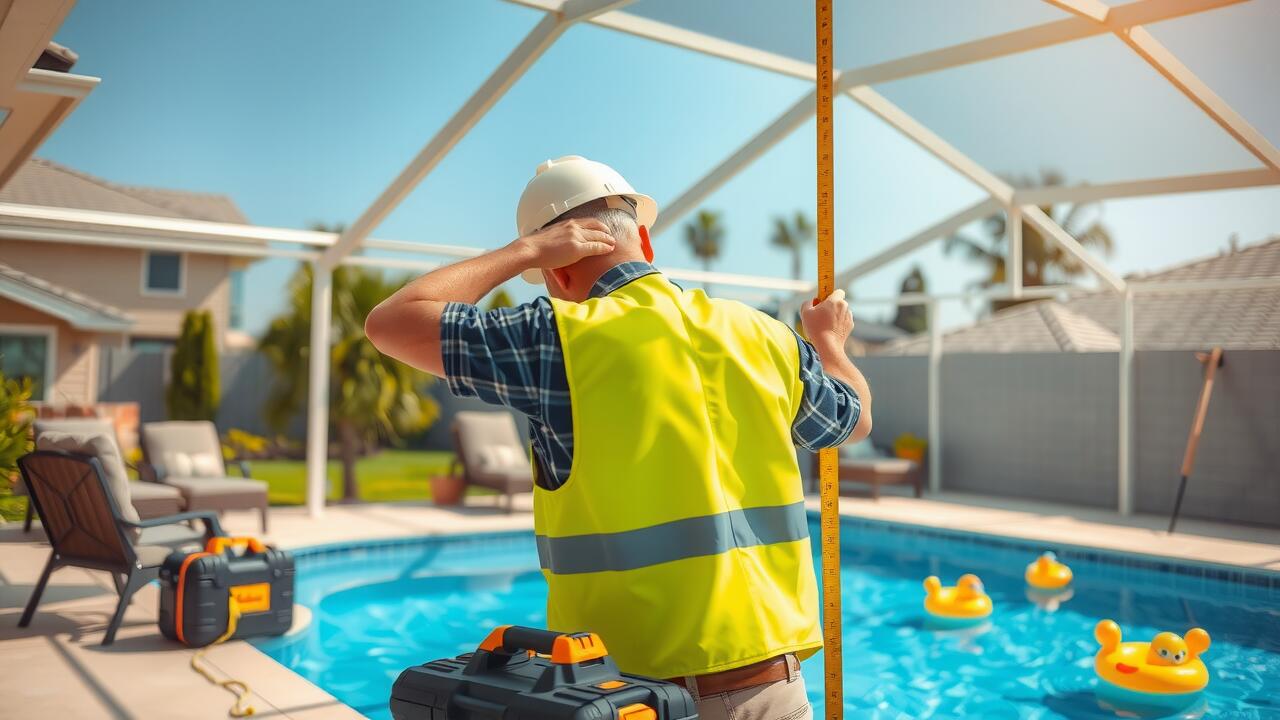
Maintenance Expenses
Maintenance expenses associated with pool enclosures can vary depending on the materials used and the environmental conditions in which they are installed. Regular cleaning is essential to keep the enclosure looking its best and functioning properly. For screen enclosures, this often involves washing the screens and frames to prevent buildup from debris and mold. Glass enclosures may require a different approach, with routine glass cleaning needed to maintain clarity and prevent staining.
In addition to general cleaning, routine inspections are crucial for identifying wear and tear. Screen damage can lead to costly repairs if not addressed promptly. Glass may require resealing or repairs due to weather-related stress. Budgeting for these maintenance tasks is vital to ensure the longevity of pool enclosures and enhance their overall functionality. Understanding these ongoing costs helps homeowners make informed decisions regarding their pool investment.
Long-Term Costs of Upkeep
Long-term upkeep of pool enclosures demands consideration of various factors that contribute to their overall cost. Regular maintenance is essential to preserve the integrity and functionality of the enclosure. This can include routine cleaning, inspections for wear and tear, and repairs, all of which accumulate over time. The materials used in the pool enclosure can influence these costs, as some materials are more durable than others and may require less frequent maintenance.
Additionally, environmental factors play a significant role in the longevity of pool enclosures. Areas with extreme weather conditions, such as heavy storms or intense sun exposure, may accelerate wear. Over time, these external elements can necessitate more extensive repairs or even replacements of certain components. Homeowners must budget for these long-term costs, ensuring that their investment in a pool enclosure remains sound and beneficial throughout its lifespan.
Comparing Different Enclosure Types
Pool enclosures come in various types, each offering unique advantages and drawbacks. Screen enclosures are popular for their cost-effectiveness and ventilation. They provide a barrier against pests while allowing fresh air to circulate. These enclosures can be less expensive to install but may require more frequent maintenance due to wear from weather exposure. On the other hand, glass enclosures present a more upscale option, providing unobstructed views of the surroundings. They offer better durability and require less maintenance over time compared to screen options.
Choosing the right type of pool enclosure often depends on individual preferences and climate considerations. Screen enclosures allow for an open feel, making them suitable for warmer climates where ventilation is essential. Glass enclosures can offer better heat retention and protection against the elements, making them ideal for regions with fluctuating temperatures. Evaluating factors such as budget, aesthetic preferences, and intended use is crucial when selecting the most suitable pool enclosure type for your home.
Pros and Cons of Screen vs. Glass Enclosures
Screen enclosures offer affordability and versatility, making them a popular choice among pool owners. Their primary advantage is the ability to provide protection from insects and debris while allowing airflow and natural light. This feature enhances the swimming experience while keeping maintenance manageable. However, screen enclosures may not offer the same durability as glass options. Over time, screens can develop tears or wear out, requiring repairs or replacements that could add to the overall cost.
Glass enclosures present a premium option for pool enclosures, providing an unobstructed view of the surroundings and enhanced aesthetic appeal. They create a more enclosed and controlled environment, effectively blocking wind and debris and providing additional climate control. Despite these benefits, glass enclosures can be significantly more expensive to install and maintain. Additionally, they may require frequent cleaning to ensure clarity, which can be a consideration for homeowners looking for lower upkeep.
Additional Features and Add-ons
When considering pool enclosures, various additional features can enhance both functionality and aesthetics. Options such as automatic screens, lighting systems, and climate control can add to the overall experience of using the pool. These features cater to different needs, from providing more comfort during cooler months to enhancing safety with automatic closing mechanisms. However, incorporating these extras will significantly influence the final cost of the enclosure.
In addition to functional enhancements, decorative elements like custom lighting or integrated sound systems can transform the pool area into a more inviting and enjoyable space. Some homeowners may choose to add built-in benches or planters, which can increase the charm of their pool environment. While these additions might elevate the overall price, they often contribute to a more personalized and luxurious experience, making the investment worthwhile for many pool owners.
Enhancements That Can Increase Cost
Adding enhancements to pool enclosures can significantly raise the overall expense. Features such as heating systems, automatic covers, or integrated lighting can contribute to higher installation and maintenance costs. These upgrades not only improve functionality but also enhance the aesthetic appeal of the enclosure, making it a more inviting space for relaxation and entertainment. When considering enhancements, it’s essential to evaluate how much value they add to your pool experience against their added costs.
Moreover, customizations like additional ventilation, sliding doors, or decorative elements can also inflate the budget. Opting for tempered glass panels instead of standard screens is a common choice, as they provide a more polished look and superior durability. However, this upgrade may come with a significant price tag. Homeowners should weigh the long-term benefits and possible increases in enjoyment against the initial investment required for these enhancements to their pool enclosures.
FAQS
What is the average cost of a pool enclosure?
The average cost of a pool enclosure can range from $5,000 to $15,000, depending on the type, size, and materials used.
What factors affect the cost of pool enclosures?
Factors that affect the cost include the type of enclosure (screen, glass, or vinyl), its size, design complexity, and additional features like heating and ventilation systems.
Are there ongoing maintenance costs for pool enclosures?
Yes, ongoing maintenance costs can include cleaning, repairs, and occasional replacements of screens or glass, which may range from $200 to $800 annually.
What are the pros and cons of screen versus glass enclosures?
Screen enclosures are generally less expensive and provide good airflow, but they may not offer the same level of protection from the elements as glass enclosures, which are more durable but can be costlier.
Can additional features influence the overall cost of a pool enclosure?
Yes, enhancements such as lighting, heating, and automated systems can significantly increase the overall cost of a pool enclosure, often adding several thousand dollars to the total expense.
